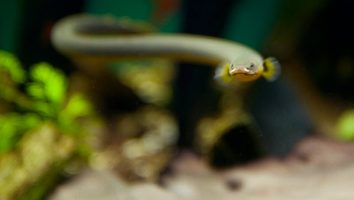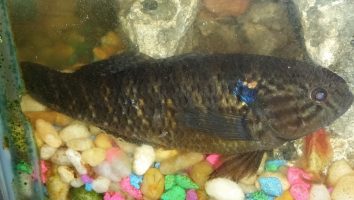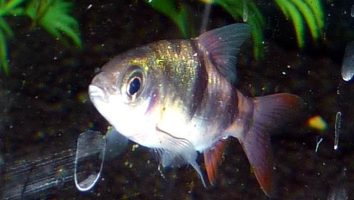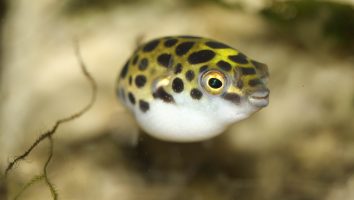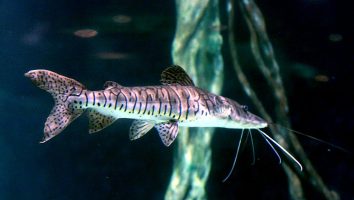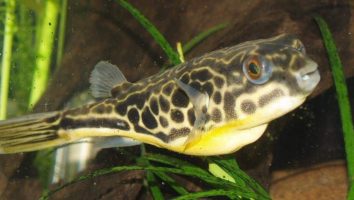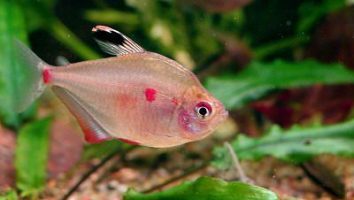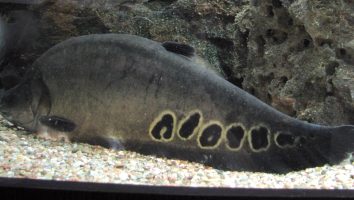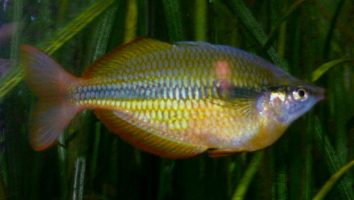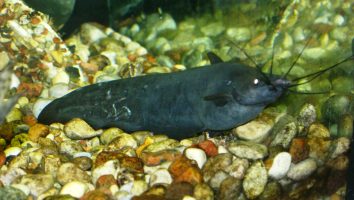The banded corydoras is a peaceful and hardy freshwater fish that is a great addition to any aquarium.
This guide will teach you everything you need to know about banded corydoras care. You’ll learn about their diet, size, lifespan, and more!
Table of contents
Species overview
Banded corydoras (Corydoras vittatus) are a South American freshwater fish that is found in the Orinoco River basin in Columbia and Venezuela. They are a schooling fish that prefers to live in areas with a high density of plants and a sandy bottom.
The banded corydoras is a peaceful fish that is often kept in aquariums with other peaceful fish species. They are a popular choice for many aquarists because they are easy to care for and are very active fish.
One of the most notable features of the banded corydoras is the black band that runs along their body. This band is what gives this fish its name.
Appearance
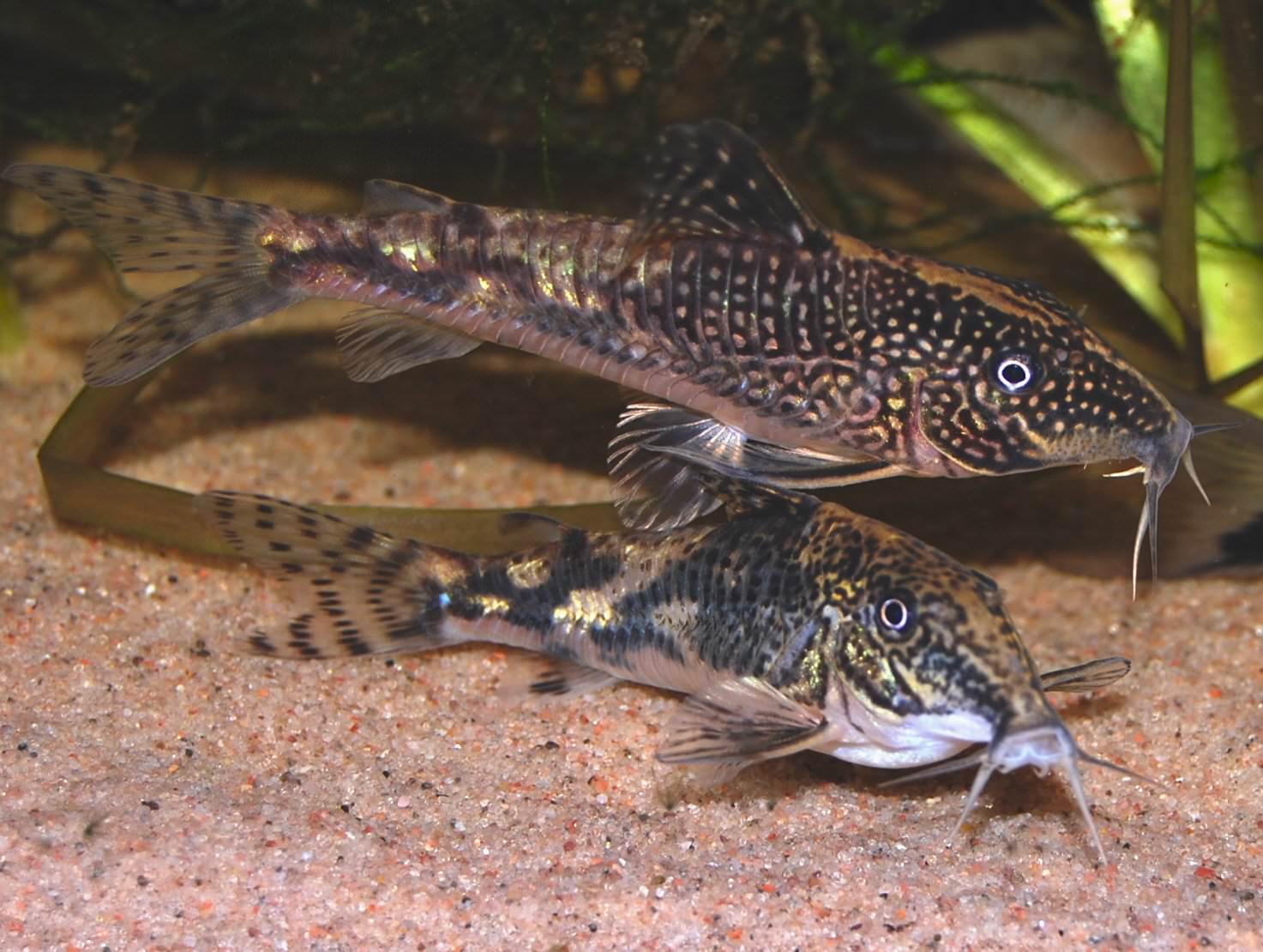
As the name suggests, these fish have a very distinct banding pattern that sets them apart from other species. The base color of these fish is a light brown or tan.
On top of this, there are 4-5 dark brown or black bands that run vertically down their bodies. The bands are of equal width and are separated by thin white lines.
The fins on these fish are also fairly standard. They have a dorsal fin that’s located about two-thirds of the way back on their body. This fin is slightly taller than their anal fin which is located closer to their tail.
Both of these fins are relatively short and end before their tail fin begins. The tail fin is forked and symmetrical.
These fish also have barbels on their chin which they use to help them find food.
Lifespan
The typical lifespan for a banded corydoras is between 5 and 10 years. However, some have been known to live for 20 years or more in captivity.
As with all animals, there are a number of factors that can impact the lifespan of a banded corydoras. These include things like water quality, diet, and stress levels.
Generally speaking, these fish are quite hardy and can withstand a fair amount of abuse. However, if they are kept in suboptimal conditions their lifespan will be significantly reduced.
Size
Banded corydoras grow to be about 2.5 inches in length.
Tank
Tank Size
The minimum tank size for keeping banded corydoras is 10 gallons. If you’re planning on keeping a school of 5 or more fish, we recommend a larger tank size in the 20-gallon range.
As with most fish, corydoras will be much happier and healthier in a larger tank. They are active swimmers and will appreciate the extra space to explore.
Water Parameters
The banded cory is a tropical fish that prefers water on the warm side. They are also a bit more sensitive to water quality than some of their corydoras cousins.
For that reason, it’s best to keep a close eye on the water parameters in your tank. Test the water frequently and do a water change as needed to keep ammonia and nitrite at 0 ppm. Nitrate levels should also be kept as low as possible.
A good rule of thumb is to do a 20% water change every week or 50% every two weeks. This will help ensure that your banded corys have the clean water they need to stay healthy and thrive.
- Water Temperature: 72 to 78 degrees Fahrenheit
- pH Levels: 6.0 to 7.6
- Water Hardness: 2 to 12 dGH
- Alkalinity Levels: 4-8 dKH
What To Put In Their Tank
When it comes to setting up the aquarium for your Banded Corydoras, there are a few key things that you need to take into account.
The most important thing is the substrate. These fish love to forage through the gravel for food. A soft, sandy substrate is ideal since it’s easier on their barbels (these are the long, whisker-like appendages on their face that they use to find food).
You should also include some plants in their tank. These don’t need to be anything fancy, but some floating plants or low-growing plants can help provide them with some shelter.
Another important thing to include in their tank is some driftwood or rocks. These can provide them with some hiding places and help make them feel more comfortable.
You should avoid using anything that’s too sharp since these fish are known to swim into things. Round, smooth rocks are best.
Finally, you need to make sure that you have a good filter. These fish are very sensitive to water quality so a good filter is a must.
Common Diseases
There are a few diseases that you should be aware of when keeping banded corydoras. The most common one is definitely ich.
This is a protozoan infection that will present itself as white spots on the body, fins, and gills of your fish. It can be quite serious if left untreated, but it’s also fairly easy to cure.
The other disease you might see is bacterial infection. This can occur if your fish are kept in poor water conditions or if they have any open wounds.
The most common symptom of this is redness and inflammation around the affected area. If you see anything like this, you should take your fish to the vet as soon as possible.
Bacterial infections are usually quite easy to treat if they’re caught early, but they can be very dangerous if left unchecked.
As always, the best way to prevent these diseases is by keeping the water in your tank clean and stable. This will create a much healthier environment for your fish and make them much less likely to get sick.
Behavior & Temperament
The banded corydoras is a peaceful fish that does best when kept in schools. They are shy fish, so a group will provide them with the safety in numbers they need to feel comfortable.
Banded corydoras are bottom-dwellers, so they will spend most of their time near the floor of the tank. They are known to be active at night, so don’t be surprised if you see them swimming around more when the lights are off.
These fish are scavengers, so they will eat just about anything. They are especially fond of live foods, but they will also eat flakes and pellets.
Overall, the banded corydoras is a peaceful fish that is easy to care for. They are a good choice for beginner aquarists.
Tank Mates
Because banded corydoras are such peaceful fish, they make great tank mates for a wide range of other species.
These fish are small and docile, so they’re not a threat to other fish. They’re also not on the menu for most predators, so you don’t have to worry about them getting eaten.
Banded corydoras are also easy to care for, which is another reason they’re such good tank mates. They’re not picky eaters and can thrive in a wide range of water conditions.
To help get you started, here are some compatible tank mates that tend to work well:
- Neon Tetra
- Guppy
- Platy
- Endler’s Livebearer
- Swordtail
- Mollies
- White Cloud Mountain Minnow
Breeding
Breeding banded corydoras is a bit more difficult than some other species, but it can be done in captivity with some patience and the right setup.
These fish are very picky when it comes to their breeding environment. The water must be soft and acidic, with a temperature between 72 and 78 degrees Fahrenheit. The tank should also be dimly lit and have plenty of hiding places.
Corydoras are egg-scatterers, so you don’t need to worry about pairs. Just add a group of about six fish to your breeding tank.
Feed them plenty of live food and keep the water clean. After a few weeks, you should start to see the females get larger. That’s when you know they’re ready to spawn.
When the time is right, the female will lay her eggs on the plants or glass. The male will then fertilize them.
Once the eggs are laid, remove the adults from the tank. The eggs will hatch in about a week.
The fry are very small and need to be fed live food. You can also give them crushed-up flakes. As they grow, you can start to introduce them to larger foods.
Conclusion
The Banded Corydoras is an excellent addition to any freshwater aquarium. They are peaceful, easy to care for, and add a splash of color to your tank.
We highly recommend this fish to both beginners and experienced aquarists alike. They are a great option for community tanks and will do well with a variety of different fish.
If you’re looking for a fun and easy to care for fish, the Banded Corydoras is a great choice!

